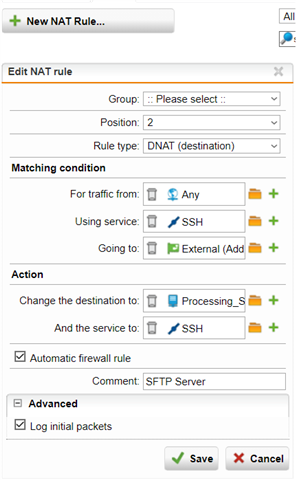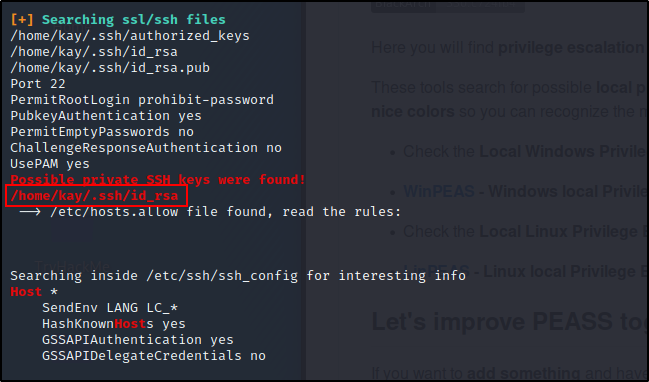

Little over 1,600 ports by default, so by selecting a nonstandard high port number, SSH may not beĭetected by scans looking specifically for it. Protocol provides 65,535 ports from which to select. SSH normally listens on TCP Port 22, but can be configured to listen on any other unused port. Configure SSH servers to use a non‐standard port Public‐key authentication, consider using this as an option to static passwords.ģ.
BRUTE FORCE PORT 22 SCP HOW TO
Guidance, see Microsoft’s “Strong passwords: How to create and use them.” c
BRUTE FORCE PORT 22 SCP PASSWORD
Make password lengths long and combine letters, numbers, and special characters. Use strong passwords or public‐key authentication Network, rather than opening up access through a firewall.Ģ. Also,Ĭonsider the use of virtual private networks (VPNs) to access services from outside the control system Research is required to ascertain what type of firewall is right for a given control architecture. Many types of firewalls are available, and some Of critical importance toĬontrol systems is how the firewall is implemented. Rules for communication with devices and between different network segments. Firewalls provide the capability to hide internal systems and define If a control system componentĭoes require Internet connectivity, such devices should be carefully deployed, and appropriate security Hide systems running services such as SSH behind a firewallĬonnecting control systems components to the Internet is a significant risk. Although any of these options will help, it isīest to practice defense in depth by protecting systems using multiple defensive techniques. MitigationĪ number of different methods can be used to mitigate this threat. The mereįact that an SSH server is running and accessible from the Internet will invite attacks.
BRUTE FORCE PORT 22 SCP SOFTWARE
Still be guessed by automated tools even without a software vulnerability in SSH or its implementations. For example, common libraries used by many implementations of SSH – like OpenSSL – may be reported.Įven so, brute‐force password guessing represents a more common threat. Does That Make it Secure?ĭespite its wide acceptance, there are still threats and occasionally software vulnerabilities associated with using Stay actively aware of what’s on their networks by performing periodic port scans b Often on networks with SSH enabled (by default) even if it hasn’t explicitly been turned on. Unexpected types of devices provide SSH access by default, including control systems equipment. While SSH is popularly associated with UNIX or Linux workstations and servers, many different and sometimes Organizations should look carefullyįor these “quiet” attempts, as they may be an indication of a careful, more directed attack. Systems by only trying a few careful attempts before waiting to try again later.

TheseĪre often easy to spot because unlike web or email traffic, systems running SSH typically only expect infrequentĬonnections from a limited number of IPs.īecause these high volume scans can be so visible, some attackers may also try to evade intrusion detection Meeting a certain set of criteria (in this case, systems running SSH).ĭue to the wide attack surface of SSH, organizations may see a particularly high number of scans for SSH. Instead, scans will often be performed against a wide range of IP addresses looking for any system


This doesn’t necessarily mean that the perpetrator is specifically targeting an Hundreds or thousands of login attempts over a relatively short time period, the system most likely has been the Organizations should check logs for generic port scans as well as system access attempts. Responds, a brute force attack may occur. In order to find running SSH services on networks they are unfamiliar with (or even the entire internet) to bruteforce,Īttackers will probe a large number of IPs on port 22 – the default TCP listening port for SSH. That contain commonly used passwords, or they may try all combinations of a character set to guess a password. Such applications may use default password databases or dictionaries Brute‐force login tools exist for just about any service that allows remote access.Īttackers can use brute‐force applications, such as password guessing tools and scripts, to try all the combinations What Are Brute Force AttacksĪ brute‐force authentication attack is a method of obtaining a user's authentication credentials by guessing Network perimeters, and when to report such occurrences. This activity has been going on for a number of years in the IT sector andĭemonstrates the need for operators of control systems to understand this threat, what to look for, how to protect Common targets for these brute‐force attacks are systems that provide ICS‐CERT is aware that many organizations have been seeing a large number of attempts to access industrialĬontrol systems by remote attackers.


 0 kommentar(er)
0 kommentar(er)
